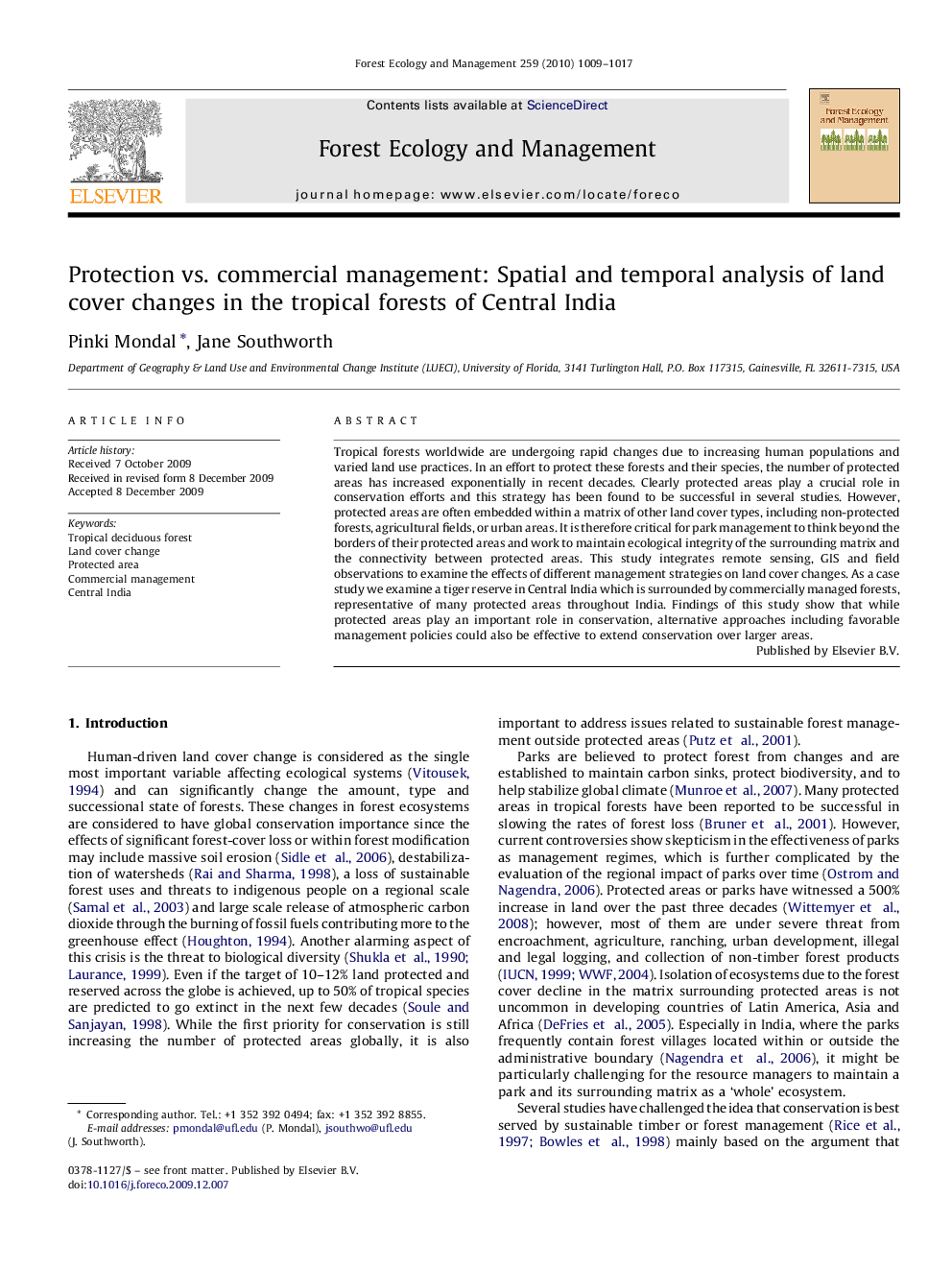| Article ID | Journal | Published Year | Pages | File Type |
|---|---|---|---|---|
| 88229 | Forest Ecology and Management | 2010 | 9 Pages |
Tropical forests worldwide are undergoing rapid changes due to increasing human populations and varied land use practices. In an effort to protect these forests and their species, the number of protected areas has increased exponentially in recent decades. Clearly protected areas play a crucial role in conservation efforts and this strategy has been found to be successful in several studies. However, protected areas are often embedded within a matrix of other land cover types, including non-protected forests, agricultural fields, or urban areas. It is therefore critical for park management to think beyond the borders of their protected areas and work to maintain ecological integrity of the surrounding matrix and the connectivity between protected areas. This study integrates remote sensing, GIS and field observations to examine the effects of different management strategies on land cover changes. As a case study we examine a tiger reserve in Central India which is surrounded by commercially managed forests, representative of many protected areas throughout India. Findings of this study show that while protected areas play an important role in conservation, alternative approaches including favorable management policies could also be effective to extend conservation over larger areas.
